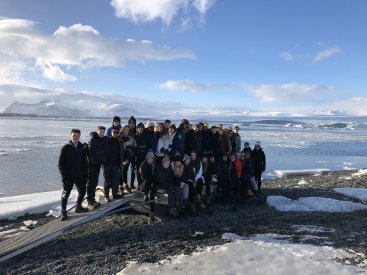Auschwitz-Birkenau visit

We were honoured to represent Arden School and travel with the Holocaust Educational Trust, to Auschwitz-Birkenau, the former death camp, in Poland. It was a truly life-changing and unforgettable experience that has certainty left a lasting impression on us, and has helped us to gain a better understanding of the true horrors many minority groups faced during the Second World War.
Before our visit, we attended an orientation seminar where we were able to listen to the testimony of Holocaust survivor Rudi Oppenheimer, who talked to us about his childhood memories at Bergen-Belsen, a Nazi concentration camp in Germany. Rudi’s story was extremely emotional, and hearing a first-hand account of the treatment of Jewish citizens during the Nazi regime prepared us for our trip, and we knew it would be a poignant one.
On the morning of the 22nd March, us four students, along with students from other sixth forms travelled to Krakow, Poland, and then another hour by coach before we reached Oświęcim, the town where Auschwitz-Birkenau is located. The anticipation to visit the camp was extended by our first stop in the town centre of Oświęcim, where we gained some knowledge of what pre-war life was like for Jewish people in Poland. After that, we went to the first camp, Auschwitz I.
Our initial reaction of seeing the camp along the road as we drove to the entrance was one of awe, and we were all so shocked to find that the camp was only a short distance from what would have been the ordinary town for everyone else at the time. Walking through the gates that read ‘ARBEIT MACHT FREI’, translating to ‘Work Sets You Free’ was quite distressing, as it we realised we were now entering the same place that many Jews never got to leave.
Entering the many buildings, we got to see the leftover shoes, suitcases, cutlery and many more items that Jewish prisoners had brought with them, thinking they were being resettled, but nothing touched us as much as seeing the amount of human hair that had been collected and placed in a room for visitors to see. The reality of the events that took place suddenly dawned on us, and it was quite upsetting. The visit to the gas chamber where the Jews were killed was also an upsetting one for many of us, and the crematoria which was beside it made many students emotional.
From Auschwitz I, we then travelled to Birkenau, the second camp, and walked through the entrance along the iconic train line. This camp was much larger than we had anticipated, and the sense of death lingered around us. The barracks and gas chambers were much like that of the other camp except much larger, and we struggled to comprehend what we were seeing until we had left the camp later. At the end of the tour, a Rabbi held a reflective ceremony for us where we said a prayer for all of the people who lost their lives during the Holocaust. It was a powerful ceremony, and afterwards we all felt very touched by the day’s events. Unlike the many people who were brought to this camp during the war though, we were able to go home.
We are so glad to have been able to visit Auschwitz-Birkenau, as it really opened our eyes to the horrors of WW2, and hope that everyone is able to visit at some point in their lives, so we never forget about the innocent ones that were lost there.
Nukhba Haroon, Emilia Driver, Emma Vill and Eva Rogers
















